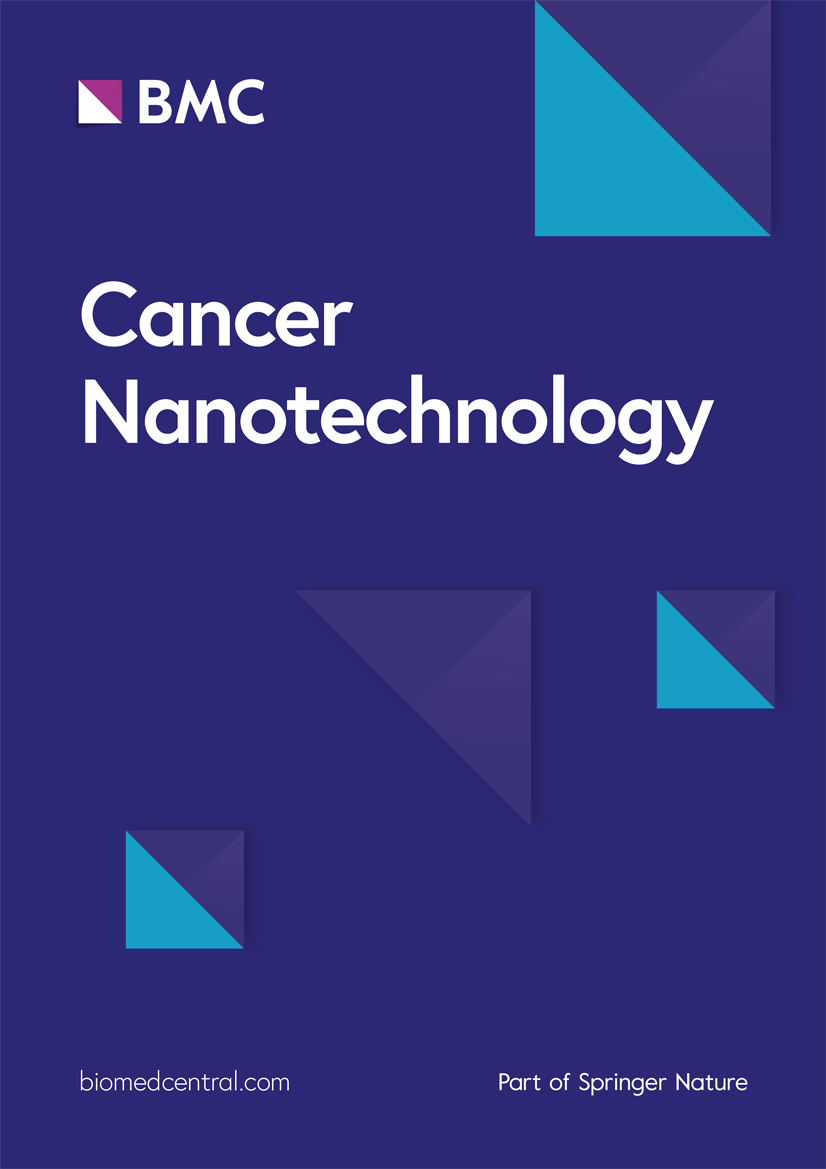Mesothelin-targeted MRI for assessing migration, invasion, and prognosis in malignant pleural mesothelioma
IF 4.8
2区 工程技术
Q2 NANOSCIENCE & NANOTECHNOLOGY
引用次数: 0
Abstract
Mesothelin (MSLN) has been implicated in cancer migration, invasion, and prognosis, making it a potential tumor marker. However, the precise role of MSLN in the migration and invasion of malignant pleural mesothelioma (MPM) remains elusive, and effective noninvasive methods for assessing MSLN status are currently lacking. In this study, we focused on MSLN expression and elucidated the underlying mechanisms by which MSLN regulates migration and invasion in MPM. Building upon this knowledge, we developed an MRI nanoprobe that targets MSLN to assess its status in vitro and in vivo by comparing T2 signal intensity and T2 values on magnetic resonance imaging examinations. This nanoprobe combines the anatomical information obtained from MRI with biological information obtained from MSLN for comprehensive evaluation of MPM. Notably, we observed that MSLN expression in the epithelial type of MPM was higher and increased continuously with tumor growth than that in other types. In addition, MSLN upregulation promoted N-cadherin, matrix metalloproteinase-7, and MMP9 expression and resulted in higher migration/invasion ability and shorter survival. We synthesized MSLN-targeted nanoprobes (Fe3O4@SiO2-PEG-MSLN, FSPM) to assess MSLN expression by comparing the T2 signal intensity and T2 value of different cell lines and mice after 14, 28, and 42 days of modeling. Remarkably, MSLN-targeted nanoprobes demonstrated excellent targeting capabilities. In vitro studies revealed a pronounced reduction in T2 signal intensity and T2 values of the epithelial type as the probe concentration increased. In addition, in vivo experiments demonstrated a gradual decline in these parameters over time, particularly in the epithelial type as compared to the biphasic type, corresponding to the dynamic expression patterns of MSLN during different growth stages. Our comprehensive research succeeded in confirming the regulatory mechanisms by which MSLN influences migration and invasion. Moreover, we introduced a promising method for monitoring MSLN expression that may help in facilitating the early detection, histological subtype identification, and assessment of migration, invasion, and prognosis in MPM.用间皮素靶向磁共振成像评估恶性胸膜间皮瘤的迁移、侵袭和预后
间皮素(MSLN)与癌症的迁移、侵袭和预后有关,因此是一种潜在的肿瘤标志物。然而,MSLN在恶性胸膜间皮瘤(MPM)的迁移和侵袭中的确切作用仍然难以捉摸,目前也缺乏评估MSLN状态的有效非侵入性方法。在本研究中,我们重点研究了 MSLN 的表达,并阐明了 MSLN 调节 MPM 迁移和侵袭的潜在机制。在此基础上,我们开发了一种针对 MSLN 的磁共振成像纳米探针,通过比较磁共振成像检查中的 T2 信号强度和 T2 值来评估 MSLN 在体外和体内的状态。这种纳米探针结合了从磁共振成像获得的解剖学信息和从 MSLN 获得的生物学信息,可对 MPM 进行全面评估。值得注意的是,我们观察到 MSLN 在上皮型 MPM 中的表达高于其他类型,并且随着肿瘤的生长而持续增加。此外,MSLN的上调促进了N-粘连蛋白、基质金属蛋白酶-7和MMP9的表达,并导致更高的迁移/侵袭能力和更短的生存期。我们合成了MSLN靶向纳米探针(Fe3O4@SiO2-PEG-MSLN,FSPM),通过比较不同细胞系和小鼠建模14天、28天和42天后的T2信号强度和T2值来评估MSLN的表达。值得注意的是,MSLN 靶向纳米探针表现出卓越的靶向能力。体外研究显示,随着探针浓度的增加,上皮细胞类型的 T2 信号强度和 T2 值明显降低。此外,体内实验表明,随着时间的推移,这些参数会逐渐下降,特别是上皮型与双相型相比,这与 MSLN 在不同生长阶段的动态表达模式相对应。我们的综合研究成功证实了 MSLN 影响迁移和侵袭的调控机制。此外,我们还介绍了一种监测 MSLN 表达的有前景的方法,该方法可能有助于 MPM 的早期检测、组织学亚型鉴定以及迁移、侵袭和预后评估。
本文章由计算机程序翻译,如有差异,请以英文原文为准。
求助全文
约1分钟内获得全文
求助全文
来源期刊

Cancer Nanotechnology
Pharmacology, Toxicology and Pharmaceutics-Pharmaceutical Science
CiteScore
5.20
自引率
1.80%
发文量
37
审稿时长
15 weeks
期刊介绍:
Aim:
Recognizing cancer as a group of diseases caused by nanostructural problems (i.e. with DNA) and also that there are unique benefits to approaches inherently involving nanoscale structures and processes to treat the disease, the journal Cancer Nanotechnology aims to disseminate cutting edge research; to promote emerging trends in the use of nanostructures and the induction of nanoscale processes for the prevention, diagnosis, treatment of cancer; and to cover related ancillary areas.
Scope:
Articles describing original research in the use of nanostructures and the induction of nanoscale processes for the prevention, diagnosis and treatment of cancer (open submission process). Review, editorial and tutorial articles picking up on subthemes of emerging importance where nanostructures and the induction of nanoscale processes are used for the prevention, diagnosis and treatment of cancer.
文献相关原料
公司名称
产品信息
阿拉丁
1-ethyl-(3-dimethylaminopropyl) carbodiimide hydrochloride (EDC-HCl)
阿拉丁
methanol
阿拉丁
(3-aminopropyl) triethoxysilane
阿拉丁
tetraethylorthosilicate
阿拉丁
ammonium hydroxide
阿拉丁
ethylene glycol
阿拉丁
ferric chloride hexahydrate (FeCl3·6H2O)
阿拉丁
sodium acetate
 求助内容:
求助内容: 应助结果提醒方式:
应助结果提醒方式:


